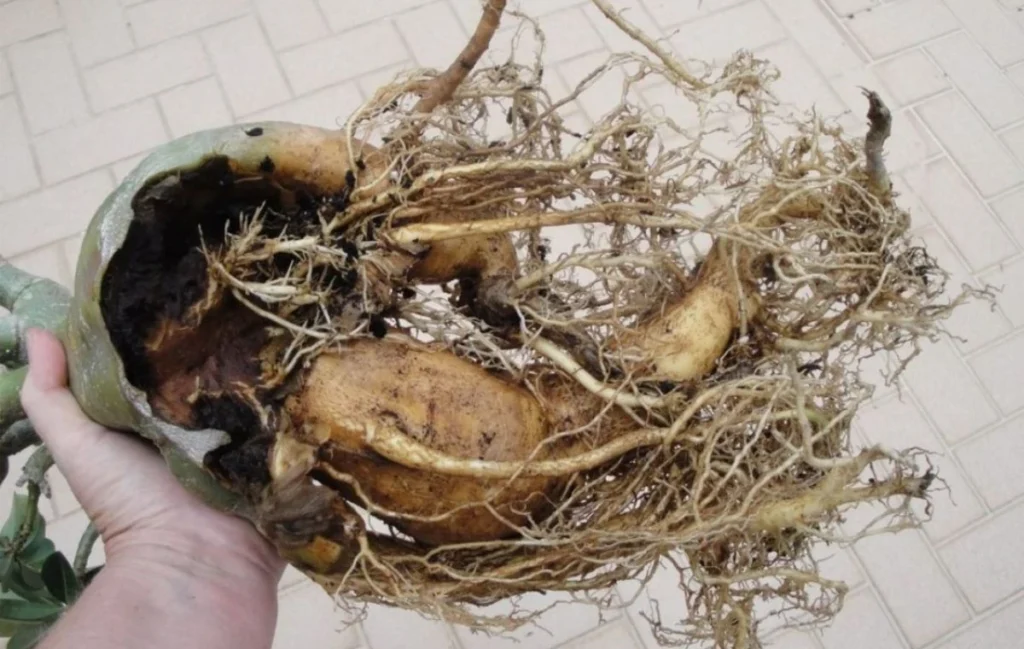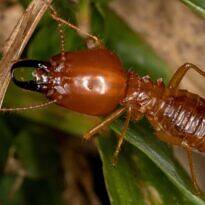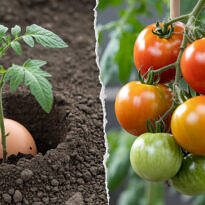Ah… the desert roses… they are such enchanting plants, it’s almost impossible to resist their colorful flowers and sculptural stems. But what happens when we give in to this charm, buy a beautiful plant (which usually isn’t cheap), and simply the caudex rots? Has this ever happened to one of your plants?

I don’t know about you, but it has happened to me twice, and the feeling is devastating. A plant that you save up to buy, choose the most lush and beautiful seedling, and after it’s been a while in your home, it suddenly has the stem (or parts of it) rotted. But do not despair. Depending on the stage and extent of this rotting, it is possible to reverse the situation, as we will see later.
But have you ever stopped to think about why the Desert Rose rots?
Before you start blaming yourself, thinking it was the fertilizer you used, or the evil eye from the neighbor, let’s learn a little about this species. Knowing more about the desert roses, the species Adenium obesum and its hybrids, allows us to take better care of them, so they grow and bloom healthy, free from pests and diseases.
The Habitat and Adaptations of Adenium obesum
Native to desert and semi-desert regions of Africa and the Arabian Peninsula, Desert Roses are plants perfectly adapted to water scarcity (and nutrients!). The rains in the regions where these plants naturally grow are scarce and poorly distributed, meaning not only is there little rain, but it also concentrates in a single season of the year. Furthermore, the soil where the Adenium grow is light, poor, sandy, and often even rocky.
There is very little organic matter available, since everything quickly degrades and dehydrates in this type of environment. The sun, the heat, and the winds often punish the wild-growing plants, and many times to protect themselves from the intense heat, they develop their caudex below ground level.
But what is the caudex?
The caudex is a modified structure, situated between the plant’s root and its stem, and its main function is to store water and nutrients to help the plant survive through tough periods and endure aridity. Looking at an unearthed plant, there isn’t a defined line separating the parts of the plant, so it is necessary to train the eye.
And look how interesting, not all desert roses have a caudex. This special structure only develops in plants that originated from seeds. Thus, when we propagate our desert roses from branch cuttings, the resulting plants, although healthy and beautiful, will never have a true caudex. Obviously, they can indeed develop beautiful and sculptural stems and roots, but never a chubby caudex as we know it.

What are the differences between the natural environment and that of our nursery?
Curiosities aside, both seed-born plants and those we’ve propagated from branches are prone to rotting. But if you paid attention to the plant’s habitat, you might have noticed some differences compared to the environment we provide for our potted plants. Generally, when cultivating in pots, we use substrates instead of soil.
The substrate is often rich in slowly decomposing organic material, so that it does not rot too quickly while still remaining airy, slightly moist, and drainable. Therefore, our substrates commonly include materials like pine bark, peat, macadamia husk, peanut shells, coconut fiber, charcoal, among other materials. To compose these substrates, we also add sand, perlite, crushed brick, gravel, expanded clay, etc., that is, materials that promote drainage, moisture, and aeration, similar to the materials we mentioned earlier.
Is this material similar to the poor desert soil?
Not even close! And it really needs to be quite different. This is important because we have to consider that our plants are not growing wild and free. On the contrary, they grow in pots, which are confined, and often shallow to promote drainage. To compensate for the differences between the natural and artificial environments, the development of substrates is crucial.
But why did I tell you all this?
It happens that few people take into account that substrates need to be changed annually (sometimes even biannually). Over time, they tend to decompose (the organic part) and compact (the mineral part), gradually losing their aeration and drainage capacity. As a result, our desert roses suffer and become susceptible to rotting. And why are aeration and drainage so important for our plants?
The roots and the caudex of the desert roses, contrary to what one might imagine, need to breathe fresh air. Even though they are below the soil line, these organs require oxygen to stay healthy. Compact soil does not allow air to circulate and ends up favoring the appearance of many opportunistic pests and diseases.
To complete the picture, it is common for plants that grow in old substrate to wilt because their diseased roots gradually lose the ability to absorb water and nutrients. When we see our thirsty plants, we end up watering them more frequently, further damaging the aeration and causing the water to become waterlogged in the substrate.
Other Causes of Rot

One of the main reasons for stem and root rot in desert roses is the aged substrate. But that’s not the only thing that can cause the problem. Monsoon seasons, with heavy rains, as well as unbalanced fertilizations, can also lead to the same issue, and we need to be vigilant to avoid disaster. As a succulent, the desert rose must be protected from intense and frequent rains and requires careful fertilization, preferably with little to no organic matter, and well calculated, to avoid excesses, especially of nitrogen.
The plant’s dormancy period is even more delicate. As the metabolism of the plants is reduced during this time, they become even more susceptible to rot of the caudex.
In addition, if the plants are infested with pests, such as root mealybugs, for example, they also become more vulnerable, as these insects tend to weaken the plants and create entryways for the rapid spread of fungi and bacteria, causing irreversible damage.
Careless management, using dirty knives, scalpels, and scissors, as well as lifting the caudex and pruning with incorrect techniques and at inappropriate times, is also a recipe for the onset of rot.
Prevention of Rot
Better than treating our sick desert roses is not having to face this serious problem at all. Rot is a stealthy disease that can often catch us by surprise in plants that seemed healthy. Believe it or not, it can’t always be prevented. But in most cases, prevention plays a crucial role, preventing our treasures from being mutilated or killed by rot of the caudex and roots. Based on what we’ve learned about the habitat and cultivation conditions, it is good to:
- Use perfectly drainable and airy substrates, with good granularity and sifted (dust-free);
- Change the substrate annually in the spring;
- Fertilize with fertilizers specific for desert roses, in the dose recommended by the manufacturer, and during the growing season, suspending fertilization during dormancy;
- Avoid using worm castings, vegetable cakes, unripe manures, and other materials that can rot in the substrate and make it pasty;
- If using organic fertilizers, prefer well-ripened or even liquid ones, such as diluted biofertilizer;
- Apply diatomaceous earth on the substrate, to strengthen the stems with silicon, and keep pests away from your plants;
- Water the plants deeply and abundantly, but always wait for the substrate to completely dry out between waterings;
- Always use sterilized cutting tools for pruning;
- Lift the caudex only in healthy plants;
- Use wide and shallow pots, to promote drainage;
- Always choose pots proportional to the size of your plants, avoiding pots that are too large for small plants;
- Maintain good pest prevention and treatment management;
- Use hydrogen peroxide solution during periods of stress and frequent rains. (see the recipe here)
If you live in an area prone to frequent rains at certain times of the year, it is advisable to water with hydrogen peroxide solution or some systemic antifungal during these periods. Talk to an agronomic engineer at the farm supply store, so they can guide you in buying and diluting the best product for this purpose. On Amazon, you can find excellent systemic antifungals ready for use, and approved for gardening.
How to Identify if Your Plant has Rot

Most of the time, by the time we notice the rot in the plants, the problem is already quite advanced. But sometimes, they give us clues before they rot. I particularly like to touch the stem of my plants regularly, checking if it’s firm. Wilted stems can mean many things, from lack of water, to excess, or even infestation by root mealybugs. But a sure sign of rot in desert roses is the softening of parts.
If on touching, the stem, caudex or roots, usually firm, give way or crumble, that is the time to worry seriously. Early diagnosis allows you to carry out drastic treatments, which avoid the death of the plant. But this is just one of the signs. Rotting can also occur, with the plants remaining firm, but with other changes, as we will see next.
The bad smell is not always present. Usually in fungal infections, the bad smell is not so common. But in some bacterial infections, we might notice a rotten smell and even a foaming exudate from the stem.
In the affected area, there may be a change in the natural color. The stem, roots, and caudex of the desert roses are generally white when cut. In case of rot, we can see blackened, beige, or brownish parts, or simply a translucent color, like gelatin.
Besides the changes in the caudex, stem, and roots specifically, the plant can give other signs, such as the yellowing of leaves. This can be gradual, or abrupt, overnight. The dropping of leaves usually accompanies this symptom.
How to Treat the Desert Rose with Rot
As soon as you notice any of these symptoms, you need to act fast. Rot usually spreads quickly, and we lose our plants in just a few days. As these plants hardly face diseases due to excess moisture in their natural habitat, they have no defenses against this type of problem, and the advancement of the disease is usually fatal if we do not intervene.
The first step for treatment consists of unpotting the desert rose to assess the extent of the damage and allow the roots to breathe. Remove all the substrate around the caudex and roots, so you can observe better, and allow the air to oxygenate the plant’s tissues.
Many bacteria that cause infection are anaerobic, meaning they are not capable of surviving in the presence of oxygen. Simply unpotting already helps to improve the environment for the roots and eliminate this type of disease.
Do not be afraid to wash your plant. Disinfection and washing of the roots and caudex should be done next, allowing both cleaning and the elimination of bacteria, fungi, pests, and enabling the visualization of all parts. For this, use the hydrogen peroxide solution or the bleach solution.
There, after your plant is clean, let it drain and dry slightly so that we can proceed to our surgery. You didn’t read that wrong. Plants have a circulatory system different from ours and from animals, and are not capable of healing or regenerating sick parts. Instead, they survive by creating new parts. An affected caudex will lose some parts, and may heal perfectly, but is not capable of regenerating just by using medications, such as a systemic antifungal, for example.

The medicine might even save the life of the plant, and allow it to heal and continue growing, but that part that was affected will never be the same as before. Thus, for us to have a plant that is again healthy and with good healing, it is ideal that we perform a surgery on our plant.
Start by identifying the sick parts. With the help of a scalpel, remove all softened or spotted parts. With each cut, sterilize your blade again with alcohol or in fire. This step might seem tedious, but it is essential to not carry the disease from the affected part to the healthy parts of the plant.
The rot may have roots deeper in your plant, with a greater extent than could be seen externally. Do not be afraid to eliminate any part suspected of disease. After only the seemingly healthy parts remain, it’s time for the final touch: remove a little bit more. This extra removal is a way for you to have a safety margin, to ensure that what remains are only healthy organs. Do not pity. This step is crucial and might be what saves the life of your plant.

After everything is cut, you have 3 options to disinfect the cutting site and accelerate the healing and recovery of the plant:
- Application of antifungal powder: Powder products based on sulfur and copper.
- Application of cinnamon powder: With natural antibiotic properties, cinnamon works as a good healing agent.
- Application of instant glue: Using a sealant at the wound site, like “super glue“, aids the plant’s quick recovery.
Surgery done, leave your plant drying in a shaded area. You can hang it by the branches so that the roots are free and airy, as well as the cutting site. The time it will remain aired out and drying depends on the size of the plant, the extent of the wound, and the weather in your city.
When the cuts are small, four days might be enough, in more extensive cuts, and in larger plants, more days might be necessary. Likewise, in rainy weather, the plant might take longer to heal, while in dry weather, it will be quicker. It’s important to use common sense and observation. But don’t forget your plant. If it stays drying too long, it will dehydrate and suffer, and all your work might go to waste.
After this healing period, you can proceed to repot your desert rose, taking care to use a high-quality substrate, sifted (without dust), to promote the health of the plant.
Caring for a Desert Rose is an art that requires knowledge, patience, and above all, a deep love for the peculiarities of this fascinating plant. Through this guide, we hope to have illuminated the paths to prevent and combat the dreaded rot, whether of the caudex or roots. Understanding the natural habitat of Adenium obesum, its specific needs, and the warning signs for health problems are crucial steps to cultivate a robust and flowering plant.

Just like in life, each plant has its own demands and peculiarities. Caring for a Desert Rose goes beyond simply watering it and exposing it to the sun; it’s about tuning in to its unique needs, paying attention to the details that make all the difference between a surviving plant and a vibrant one. If you have faced challenges in cultivating these desert beauties, know that each problem overcome is a step further in the journey to become a more experienced gardener and connected with the green around you.
So, given all this, why not share your own experiences? Have you faced challenges while cultivating your Desert Rose? Have you overcome them or are you looking for solutions? Get in touch and let’s exchange knowledge so that these enchanting plants survive and bloom in our homes, bringing more color and life to our days.







